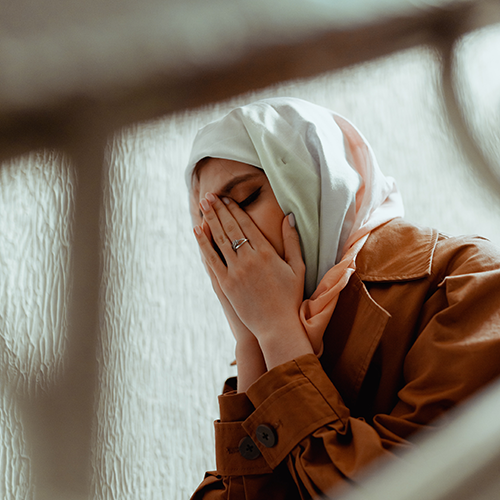(Posted 2022 November)
 When folks hear someone is in a toxic or abusive relationship, often the first question is, “Why doesn’t she leave?” If you’ve never been through an abusive relationship, this might seem like a logical question. Pack up the kids and peace out, right? But when it comes to intimate partner abuse, it’s not that simple.
When folks hear someone is in a toxic or abusive relationship, often the first question is, “Why doesn’t she leave?” If you’ve never been through an abusive relationship, this might seem like a logical question. Pack up the kids and peace out, right? But when it comes to intimate partner abuse, it’s not that simple.
Escaping a violent relationship might be best for someone being abused by an intimate partner. But this is not the one true answer for many people in this situation. People who cause harm often go to extremes to prevent a partner from leaving. In fact, research shows leaving is the most dangerous time for a victim of domestic violence. On average, three women in this country die at the hands of a current or former intimate partner every day, and the Domestic Violence Intervention Program found women are 70 times more likely to be killed in the weeks after leaving their abusive partner than at any other time during the relationship. One study of men who killed their wives found threats of separation by their partner or actual separations were most often the precipitating events that led to the murder.
A victim's reasons for staying in an abusive relationship are complex and, in many cases, based on the belief their partner will follow through with threats to hurt or kill them, their children, other family members, or their pets; to fight for custody of the children; or to cause financial ruin. Victims of violent relationships know their abusive partners best and the extent to which those partners might go to maintain control. A victim may not be able to escape and protect people they love. A recent study of intimate partner homicides found 20% of homicide victims were not the domestic violence victims themselves, but family members, friends, neighbors, law enforcement, or bystanders who came to their aid.
Other barriers to escaping a violent relationship may include:
- Unsupportive family
- Fear of the difficulties of single parenting and reduced financial circumstances; no way to support themselves or their children; or lack of access to cash, bank accounts, and assets
- Lack of knowledge of or access to safety and support
- Nowhere to go and the fear that homelessness may be the only option if they leave
- Religious or cultural beliefs and practices that don’t approve of divorce or that dictate outdated gender roles that keep victims trapped in the relationship
- Belief that two-parent households are better for children, no matter what
- Love for the person causing harm (no relationship is violent 100% of the time) and the hope that things will get better
In addition to individual obstacles, society throws up roadblocks to women trying to flee violence, including:
- We live in a culture that normalizes unhealthy behavior, making it hard for victims to identify abuse, especially if it’s the kind that doesn’t leave bruises or broken bones.
- A criminal justice system that may treat violence as a domestic dispute instead of a crime where one person is physically attacking another person. Often, victims of abuse are arrested and charged by law enforcement, even if they are only defending themselves. Sometimes police discourage victims from filing charges, dismiss or downplay the abuse, side with the person causing harm, or don’t take the abuse seriously.
- Prosecutors who are reluctant to prosecute cases. Some may convince the person who caused harm to plea to a lesser charge, further endangering victims. In addition, judges rarely impose the maximum sentence for abuse; probation or a fine is more common.
- Weak restraining orders. Even when protective orders are issued, there is little to prevent a person who causes harm from violating the order and repeating the abuse.
- Too few shelters to keep victims safe.
- Socialization that says women are responsible for making a relationship work. A failed relationship equals failure as a woman. Societal factors tie a woman’s self-worth to getting and keeping a man.
- Isolation by the violent partner or from shame, which contributes to a sense of having nowhere to turn.
Lots of elements influence a person’s decision to stay in an abusive relationship. Seeking help to get out of these relationships is important but questioning or blaming someone about why they stay in an abusive relationship is never OK. Instead of wondering why someone stays in or returns to a violent relationship, a better question might be: Why don’t people who cause harm stop the abuse?
*All genders are victims of domestic violence, but women are more likely to be victims, as well as more likely to be asked this question. For the sake of this discussion, we’re using feminine pronouns.

